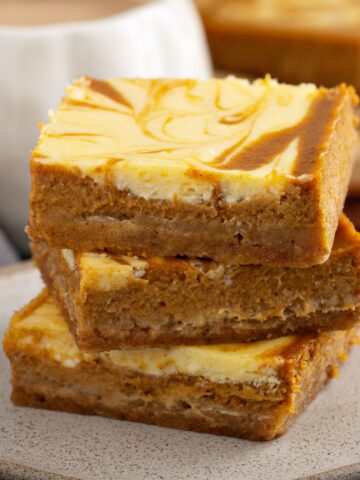If you're a fan of Italian cuisine, you've probably heard of pesto. This vibrant and flavorful sauce is traditionally made with fresh basil, pine nuts, garlic, Parmesan cheese, and olive oil. Pesto, originating from Genoa, Italy, is traditionally made using a mortar and pestle. However, in modern times, a food processor or blender can be used for convenience.

This recipe is a slight twist on the classic, so why not try making pesto with walnuts instead?
Walnuts add a delicious nutty flavor and a creamy texture to the sauce, making it a perfect accompaniment to pasta, sandwiches, or as a dip. Making pesto with walnuts is incredibly easy and requires just a few simple ingredients. It is also important to note that walnuts are less expensive than pinenuts. So, from cost perspective walnuts are a much better choice.
Ingredients:
- 2 cups fresh basil leaves
- ½ cup walnuts
- 2 cloves of garlic
- ½ cup grated Parmesan cheese
- ½ cup extra virgin olive oil
- Salt and pepper to taste
Instructions:
To begin, carefully wash the fresh basil leaves and pat them dry with a clean kitchen towel. It is important to use fresh basil as it adds a vibrant and aromatic flavor to the pesto.
Next, measure out 2 cups of basil leaves and set them aside.
In a dry skillet, toast the walnuts over medium heat until they become fragrant and slightly golden. This step enhances the nutty flavor of the walnuts and adds a delightful crunch to the pesto. Allow the toasted walnuts to cool before proceeding.
Peel and mince the garlic cloves. Garlic is an essential ingredient in pesto, providing a pungent and slightly spicy taste. If you prefer a milder garlic flavor, you can reduce the amount of garlic used.
Now, it's time to combine all the ingredients in a food processor or blender. Add the basil leaves, toasted walnuts, minced garlic, grated Parmesan cheese, and a pinch of salt and pepper.
Pulse the mixture a few times to start breaking down the ingredients. With the food processor or blender running, slowly drizzle in the extra virgin olive oil. The olive oil helps bind the ingredients together and creates a smooth and creamy texture.
Continue blending until the pesto reaches your desired consistency. Some prefer a chunky pesto, while others prefer a more finely blended sauce. Once the pesto is ready, taste and adjust the seasoning if needed. You can add more salt, pepper, or even a squeeze of lemon juice for a tangy kick.
Remember, cooking is all about personal preference, so feel free to customize the flavors to suit your taste. Transfer the pesto to a clean jar or airtight container and store it in the refrigerator.
This Pesto with Walnuts can be kept for up to a week, but it is best enjoyed within the first few days when the flavors are at their peak.
How to Serve Pesto with Walnuts
Grilled Vegetables: Brush the pesto onto your favorite vegetables before grilling them. The heat will intensify the flavors of the pesto and create a delicious charred crust on the vegetables.
Pesto Pasta: One classic way to enjoy pesto is to toss it with cooked pasta. The vibrant green color and fragrant flavors of the pesto coat the pasta beautifully, creating a simple yet delicious meal.
Pesto Spread: Spread the pesto on a sandwich or wrap. Its rich and creamy texture adds a burst of flavor to any sandwich filling, whether it's turkey, chicken, or even just some fresh veggies.
Stuffed Chicken Breast: Make a pocket in a chicken breast and stuff it with a mixture of pesto and cream cheese. Bake until the chicken is cooked through and the filling is melted and flavorful.
Breakfast Eggs: Add a spoonful of pesto to your scrambled eggs or omelet for a burst of flavor. The combination of the creamy eggs and the nutty pesto will make your breakfast extra special.
Roasted Potatoes: Toss your roasted potatoes with a generous amount of pesto right before serving. The earthy flavors of the potatoes will complement the nutty pesto perfectly.
Pesto Dip: Pesto also makes a great dip or spread for appetizers. Serve it with some toasted baguette slices or crunchy crackers for a tasty and elegant party snack.
Pesto Bread: Make a batch of homemade bread and swirl some pesto into the dough before baking. The aroma of the freshly baked bread combined with the rich flavors of the pesto will be irresistible. We made Pesto Loaf Bread with Biscuits and it was perfect!
Pesto Butter: Mix softened butter with pesto to create a flavorful spread. Use it on toast, corn on the cob, or grilled meats for an extra kick of flavor.
Pesto Marinade: If you're feeling creative, you can use pesto as a marinade for grilled chicken or fish. The herbs and garlic in the pesto infuse the meat with incredible flavor, making for a delicious and impressive main course.
These are just a few ideas to inspire you to get creative with pesto and walnuts. Don't be afraid to experiment and find your own favorite ways to enjoy this delicious combination.

Easy Walnut Pesto Recipe
This vibrant and flavorful sauce is traditionally made with fresh basil, pine nuts, garlic, Parmesan cheese, and olive oil.
Ingredients
- 2 cups fresh basil leaves
- ½ cup walnuts
- 2 cloves of garlic
- ½ cup grated Parmesan cheese
- ½ cup extra virgin olive oil
- Salt and pepper to taste
Instructions
- To begin, carefully wash the fresh basil leaves and pat them dry with a clean kitchen towel. It is important to use fresh basil as it adds a vibrant and aromatic flavor to the pesto.
- Next, measure out 2 cups of basil leaves and set them aside.
- In a dry skillet, toast the walnuts over medium heat until they become fragrant and slightly golden. This step enhances the nutty flavor of the walnuts and adds a delightful crunch to the pesto. Allow the toasted walnuts to cool before proceeding.
- Peel and mince the garlic cloves. Garlic is an essential ingredient in pesto, providing a pungent and slightly spicy taste. If you prefer a milder garlic flavor, you can reduce the amount of garlic used.
- Now, it's time to combine all the ingredients in a food processor or blender. Add the basil leaves, toasted walnuts, minced garlic, grated Parmesan cheese, and a pinch of salt and pepper.
- Pulse the mixture a few times to start breaking down the ingredients. With the food processor or blender running, slowly drizzle in the extra virgin olive oil. The olive oil helps bind the ingredients together and creates a smooth and creamy texture.
- Continue blending until the pesto reaches your desired consistency. Some prefer a chunky pesto, while others prefer a more finely blended sauce. Once the pesto is ready, taste and adjust the seasoning if needed.
- Remember, cooking is all about personal preference, so feel free to customize the flavors to suit your taste. Transfer the pesto to a clean jar or airtight container and store it in the refrigerator.
- Pesto can be kept for up to a week, but it is best enjoyed within the first few days when the flavors are at their peak.
Nutrition Information:
Yield:
12Serving Size:
1Amount Per Serving:Calories: 128Total Fat: 13gSaturated Fat: 2gTrans Fat: 0gUnsaturated Fat: 10gCholesterol: 4mgSodium: 101mgCarbohydrates: 2gFiber: 0gSugar: 0gProtein: 2g
Calories are estimated and may vary.
Follow Thyme of Season on Newsbreak!
















